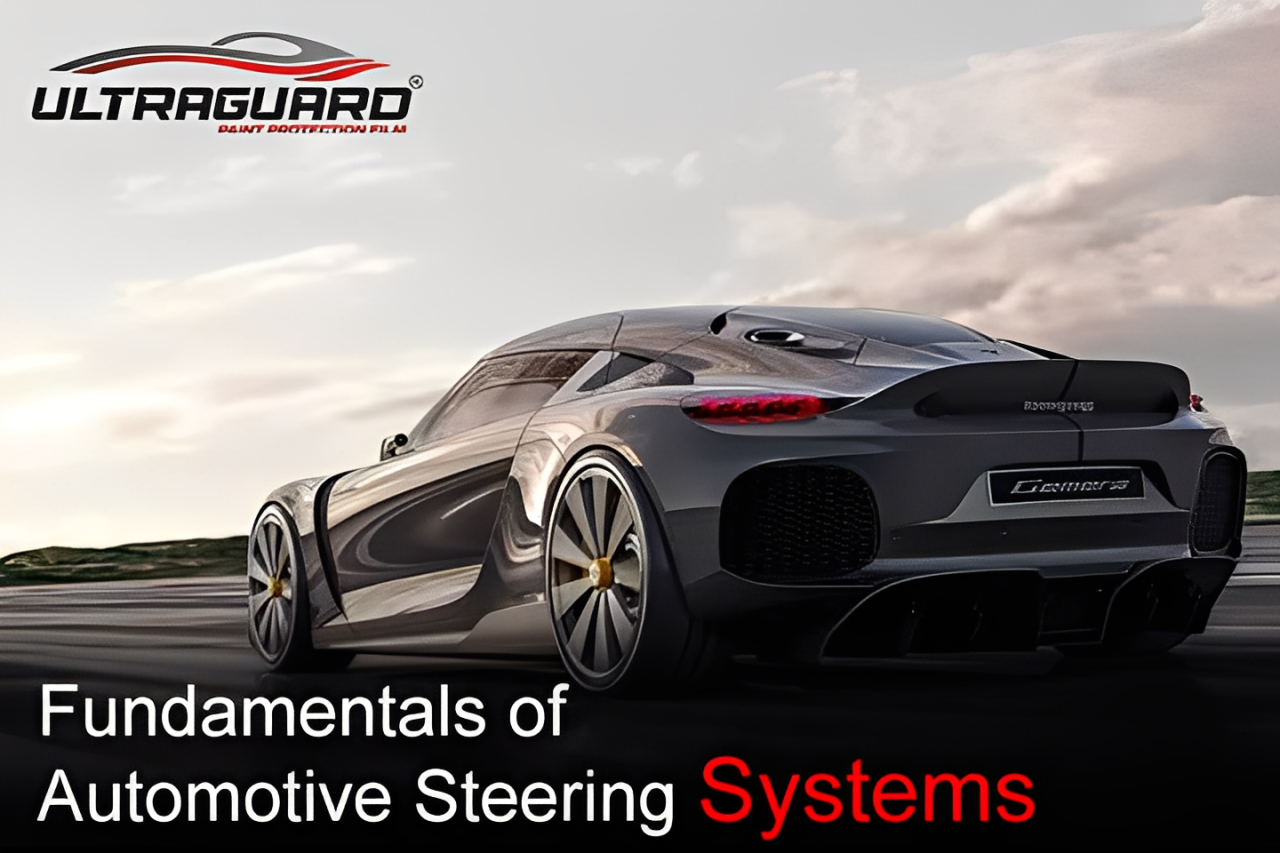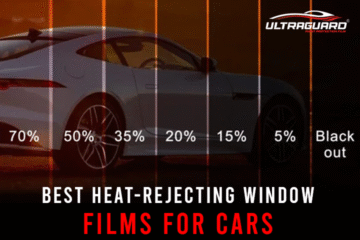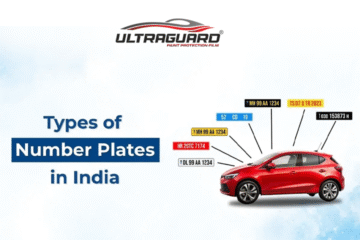Automotive steering systems are the most significant part of any vehicle, as they attach the driver to the input wheels of the car. This steering assists in giving directional control to your vehicle, whether directing through sharp corners, moving on a highway, or parking your car in a narrow parking space. Therefore, your steering wheel is continuously in the work process.
But how does it work, and how might some cars seem more responsive than others? What makes this kind of difference in the automotive steering systems of any advanced vehicle? And how this steering system technology is evolving in contemporary autonomous driving.
This blog will delve into decrypting automotive steering systems by dividing them into evolution, components, advantages, difficulties, and future trends.

The Fundamentals of Automotive Steering Systems
The primary work of a steering system is to permit the driver to control the direction of the automobile’s wheels. Its major function is simple: converting the steering wheel’s rotary movements into the wheels’ angular turn.
However, the science behind it is much more complex. A good steering system should be:
- Lessen your driving effort
- Be precise and responsive
- Provide safety and stability
- Absorbs the road shock
- Manages different speeds and terrains
Without a trustworthy steering system, even if the engine were the most powerful or your vehicle might have advanced safety characteristics, all this would not matter as the driver wouldn’t have complete control over the car.
Evolution of the Automotive Steering Systems
The evolution of the steering wheel has been fascinating, similar to how an automobile is
- Late 19th Century – Previous cars used a tiller system similar to boat steering. Therefore, it was simple but mostly inefficient for bigger vehicles.
- 1894—The Ackerman steering geometry was formed, ensuring that wheels could pivot slightly at different angles for a seamless turn.
- 1920s-30s – The worm and roller mechanisms became a common giving sturdier and more predictable steering.
- 1951 – Chrysler introduced the first passenger car with power steering, drastically lessening the driver’s effort.
- 1990s – Rack and Pinion steering forms the global standard, generally with hydraulic assistance.
- From the 2000s onwards, the industry has shifted towards electric power steering (EPS), accelerating fuel efficiency, customisation, and integration with driver-assist technologies.
Contemporary automotive steering systems are not just about control; they focus on comfort, performance, and even self-driving technology.
How Automotive Steering Works
The car steering system explained helps us appreciate how each part works together for seamless driving.
Key Components
- Steering wheel – The driver’s input device.
- Steering column – Attach the wheel to the steering gear, sometimes with foldable designs for safety.
- Steering gearbox – Transforms the rotary movement into a linear motion for wheel movement.
- Tie rods – Connect the steering gear to the wheels.
- Power assist unit (Electric/ Hydraulic) – Lower the need for physical effort.
Every part has its own role, and damage to even one component can cause steering issues, such as vibrations, pulling, or no responsiveness at all.
Different Kinds of Automotive Steering Systems
As the automotive steering systems have evolved into many kinds, each has its pros and cons.
1. Manual Steering System
- Usually searched in old vehicles or lightweight cars.
- Easy design, lower cost, but needs more effort.
2. Hydraulic Power Steering (HPS)
- Use hydraulic pressure from a pump driven by the engine.
- Pros – Seamless and powerful steering guidance.
- Cons – Higher fuel consumption and management are required.
3. Electric Power Steering (EPS)
- Utilise an electric motor for steering guidance.
- Pros – Fuel efficient, lightweight, permits modern driver-assist characteristics.
- Cons – A costly repair if the components fail.
4. Electro-Hydraulic Steering
- A hybrid system mixes the electric motor and hydraulic pump.
- Stabilises the efficiency and steering.
5. Four-wheel Steering (FWS)
- Allows the rear wheels to turn slightly in collaboration with the front wheels.
- Enhances the manoeuvrability at lower speeds and stability at high speeds.
6. Steer-by-Wire Systems
- Removes the mechanical link between the steering wheel and wheels.
- Entirely electronic, adaptable, and core to autonomous vehicles.
How Does the Automotive Steering System Affect Driving?
Here are the pointers on how automotive steering systems affect driving as follows:
- Highways—The hydraulic system still gives a more “linked” road feel, though the benefited EPS now rivals this.
- Luxury cars – Steer-by-wire is appearing, enabling a smooth integration with autonomous functions.
- City driving – EPS rules, thanks to its light feel and efficiency.
- Off-roading – Any heavy-duty hydraulic or electro-hydraulic system stands out due to its durability.
Typical Steering Issues and Symptoms
Even the most modernised automotive steering systems can form issues over time. Some of the basic incorporation:
- Steering wheel vibration – Usually linked to misaligned wheels or suspension wear.
- Noisy steering – Whining and grinding noises suggest fluid and pump problems.
- Stiff steering – A low power steering fluid, pump failure or EPS motor problems generally cause it.
- Pulling to one side – It displays the alignment issues, uneven tire pressure, or steering linkage wear.
Daily maintenance and routine inspection can avert costly failures.
Why Do Automotive Steering Systems’ Safety Matter?
Your car’s steering is not just about ease or comfort; instead, it’s about a core safety characteristic. Responsive steering can make a massive difference in averting accidents and being a part of one.
Advanced Automotive Steering Systems are Formed for:
- Gives lane-keeping assistance
- Work along with the stability control system
- Enhances the driver’s confidence at high speed.
- Lessen the fatigue while on long drives.
In simple words, firmer automotive steering systems ensure both protection and control. These two things the driver should never compromise on.
A Hidden Link Between Automotive Steering Systems and Car Aesthetics
Though the steering system ensures seamless control, a car’s visual appearance ensures it turns heads wherever it goes. Think of having a flawless engineered steering setup, but a faded paint or scratch would destroy the overall look.
This is where the Ultraguard PPF coating for car comes into action. Like how a steering system safeguards your drive, similarly, the Ultraguard PPF safeguards your car paint against all these issues:
- Harmful UV rays fade away the paint and discolour your vehicle.
- Stone chips and scratches.
- Bug splatter, bird droppings, and chemical stains.
- Swirl marks that might get by doing persistent washing.
It is an invisible shield for your vehicle, which is on your car’s exterior surface. It does make a massive difference in your long-term performance and appearance.
Future of the Automotive Steering System
With the growth of electric and autonomous vehicles, steering technology is entering a new era.
- Foldable Steering Wheel – This is for autonomous cars, where the steering wheel might be withdrawn when not required.
- Steer-by-Wire Adoption – Expect more cars without any mechanical connections, and providing a tailored steering feel.
- AI-Integrated Steering – A System that adapts to driving behaviour and road circumstances.
- Augmented Reality Integration – steering being linked with AR dashboards for precision driving.
The steering wheel might seem completely different in the next decade, but its significance will stay unchanged.
Maintenance Tips for Keeping Your Automotive Steering Systems Healthy
There is not much to do to keep your vehicle’s steering in the best condition, but yes, you need to be consistent with it.
- Examine the belt and hoses for tears and wear.
- Inspect power steering fluids daily.
- Keep the tire inflated to the correct pressure.
- Match and balance the wheels around every 10,000km.
- Don’t ignore the unusual vibrations and noises.
Just as you manage the steering system for performance, safeguard your car’s finish with Ultraguard paint protection finish because performance and look go together.
Automotive Steering System and Your Driving Experience
Have you ever seen how two cars with the same engines can make driving difficult? Usually, the difference lies in the steering system.
- SUVs generally depend on power-assisted systems to manoeuvre their bulk.
- Sports cars utilise the instant ratio steering for sharp responses.
- Luxury cars employ adaptive EPS to achieve an ideal balance between control and comfort.
Steering does make you feel connected to the vehicle you are driving; therefore, it is the ultimate link between machine and man.
The Parallel Thing Between Paint Protection Film and Steering
There is a fantastic similarity between paint protection film and automotive steering systems as follows:
- Both of them silently work on the vehicle.
- Both elevate safety, such as steering for control and the PPF coating for car for structural integrity.
- Both safeguard the car’s long-term value along with the responsive steering and a flawless paint finish, which is much higher than its resale price.
So, investing in an Ultraguard PPF coating for your car complements the care you provide to critical systems, such as steering. Together, they ensure your car runs properly and safeguard you from harmful environmental elements.
Conclusion
Decrypting automotive steering systems shows how much engineering, though, and evolution happens into something we usually take for granted. From manual steering to early automobiles for a modernised steer-by-wire system for tomorrow, the steering system remains the backbone of vehicle safety and control.
Meanwhile, a properly maintained car is not just about what is under the hood. Still, it is also about how it looks externally, by selecting the correct solution, such as Ultraguard paint protection film. We ensure that your car’s appearance matches the precision of the automotive steering systems. After all, automotive excellence creates the ideal balance between safety, performance, and aesthetics.
Frequently Asked Question (FAQs)
Q1. What is a steering system in a vehicle?
It is a mechanical network that permits the driver to control the vehicle direction by transforming the rotational movements of the steering wheel into left-right motion of the wheel.
Q2. What are the 3 kinds of steering systems?
Here are the 3 kinds of steering systems as follows:
- Rack and Pinion
- Recirculating ball steering system
- Power steering
Q3. What is oversteering?
An automobile’s status where it turns more sharply than the intention of the driver, which eventually causes the rear wheel to lose traction and the rear of the car to swing out or slide.
Q4. Can a steering system affect the fuel efficiency?
Yes, a hydraulic power steering system lessens the fuel efficiency because the engine operates the pump. The Electric Power Steering (EPS) is higher fuel efficient, forming it the most selected choice for the latest vehicles.
Q5. What do you understand by steer-by-wire technology?
Steer-by-wire technology detaches the link betwixt the steering wheel and wheels. So instead, it uses electronic signals. This permits a tailorable steering feel and is crucial in autonomous vehicle formation.
Q6. How often should I get my steering service up?
It is good to get it checked and serviced at every inspection service time. Power steering fluid should be checked daily, and the wheel alignment should be done every 10,000 – 12000 Km.




0 Comments